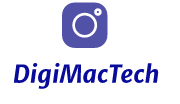Introduction
In today’s fast-paced digital world, the need for seamless and efficient printing solutions is more critical than ever. One common question that arises is: can a print server be used for mobile printing? The short answer is yes. But to fully grasp the capabilities and benefits, a deeper understanding of both print servers and mobile printing is necessary. In this article, we will delve into how print servers can be integrated with mobile printing solutions, the steps involved, and their numerous advantages.
Understanding Print Servers and Mobile Printing
What is a Print Server?
A print server is a network device that connects printers to client devices (computers, laptops, etc.) over a network. Print servers facilitate the management of print jobs efficiently and allow multiple users to share a printer or a group of printers.
| Feature | Description |
|---|---|
| Centralization | Manages multiple printers from one centralized location |
| Efficiency | Optimizes print jobs and reduces waste |
| Accessibility | Allows multiple users to access printers remotely |
| Resource Management | Monitors usage and tracks printing resources |
What is Mobile Printing?
Mobile printing refers to the ability to print documents directly from a mobile device, such as smartphones or tablets, without needing a wired connection to the printer. This typically involves wireless communication technologies like Wi-Fi, Bluetooth, or NFC.
How Print Servers Facilitate Mobile Printing
Compatibility
Modern print servers are designed to be compatible with various mobile printing solutions. They usually support popular mobile printing standards such as:
- Apple AirPrint: for iOS devices
- Google Cloud Print: (now deprecated, but replaced by similar services)
- Wi-Fi Direct: for direct communication between mobile devices and printers
- Manufacturer’s Apps: Proprietary solutions from brands like HP, Epson, Canon, etc.
Configuration
Setting up a print server to handle mobile printing involves configuring both the server and the mobile devices. Below are the general steps:
- Network Setup: Ensure the print server and the mobile devices are connected to the same network.
- Printer Sharing: Configure printers on the server to be shared over the network.
- Install Relevant Apps: For example, install Apple AirPrint or any other necessary app on your mobile device.
- Test Print: Conduct a test print from a mobile device to ensure the setup works correctly.
Here’s a simplified configuration flow:
| Step | Description |
|---|---|
| 1 | Connect print server and mobile devices to the same network |
| 2 | Configure printer sharing on the print server |
| 3 | Install necessary mobile printing applications |
| 4 | Test the mobile printing setup |
Advantages of Using Print Servers for Mobile Printing
Cost-Effectiveness
One of the significant benefits of using a print server for mobile printing is cost-effectiveness. Organizations can reduce the expenses involved in setting up individual printers for every mobile device, thereby centralizing and streamlining the printing process.
Enhanced Security
Print servers often come with robust security features. They can restrict access to authorized users, encrypt data during transmission, and log printing activities, thus ensuring a secure mobile printing environment.
Scalability
The scalability of print servers makes them an excellent choice for both small and large organizations. Their ability to handle numerous print jobs simultaneously without compromising on performance ensures that mobile printing remains efficient even as the organization’s needs grow.
Management and Monitoring
Print servers offer advanced management and monitoring capabilities. IT administrators can easily oversee print jobs, allocate resources efficiently, and troubleshoot issues promptly. These features are invaluable for maintaining a streamlined operation.
Challenges and Solutions
Compatibility Issues
One potential challenge is compatibility between older printers and mobile devices. To resolve this, organizations may need to invest in updated hardware or firmware.
Network Security
Ensuring network security is crucial when configuring a print server for mobile printing. Employing advanced encryption techniques and constant monitoring can mitigate potential security risks.
Configuration Complexity
Setting up a print server for mobile printing can be complex, especially for non-technical users. However, many print servers come with user-friendly interfaces that simplify the process. Additionally, consulting tech support or professional services can further ease this challenge.
Real-World Applications
Corporate Environment
In a corporate setting, print servers enable employees to print directly from their mobile devices during meetings or while working remotely within the office premises. This enhances productivity and conserves time.
Educational Institutions
Students and faculty members can benefit from mobile printing solutions, allowing them to easily print assignments, lecture notes, and other important documents as they move around the campus.
Healthcare Facilities
Healthcare professionals can print patient records, prescriptions, and other vital documents directly from their mobile devices, reducing wait times and improving patient care.
Conclusion
The integration of print servers with mobile printing is a transformative approach that meets the demands of modern, flexible working environments. Not only does it make printing more accessible and efficient, but it also enhances security, cost-effectiveness, and scalability. By overcoming compatibility and configuration challenges, organizations can fully leverage the power of mobile printing via print servers, ensuring a seamless and productive experience for all users.
